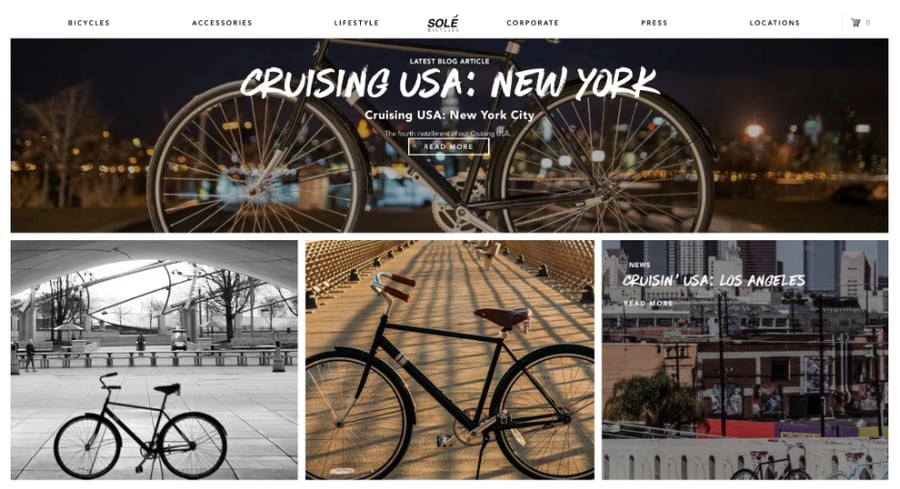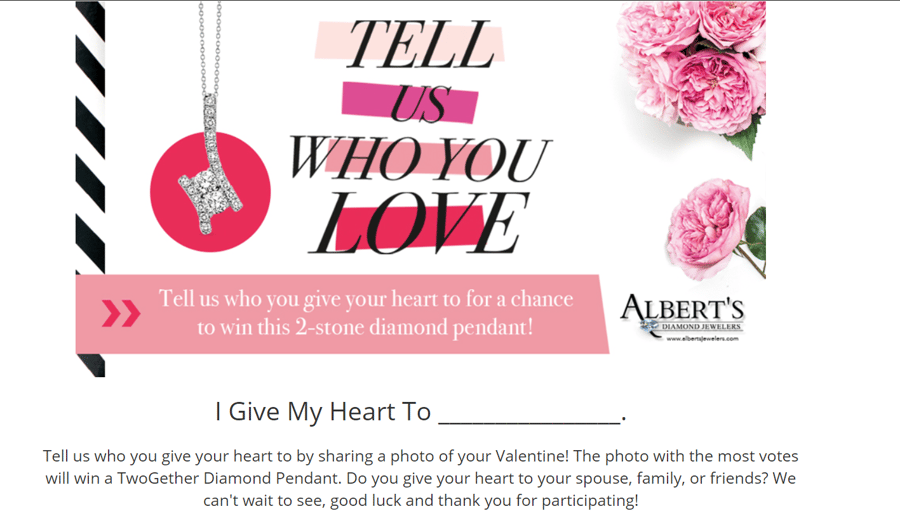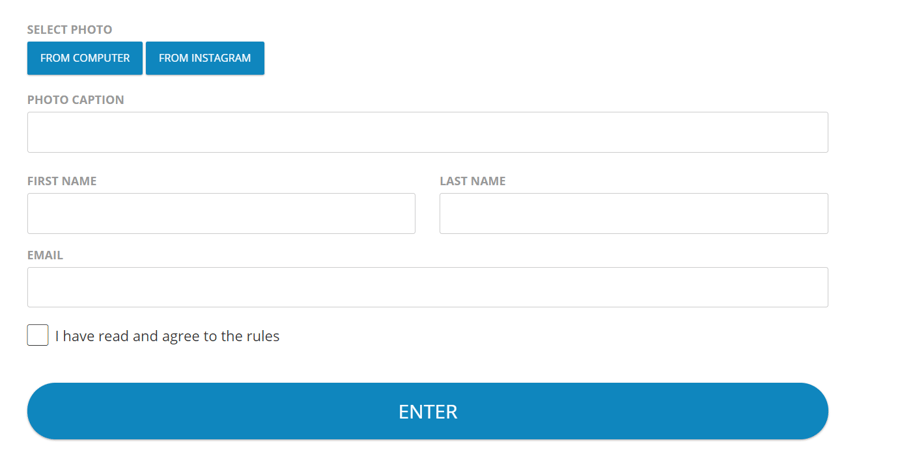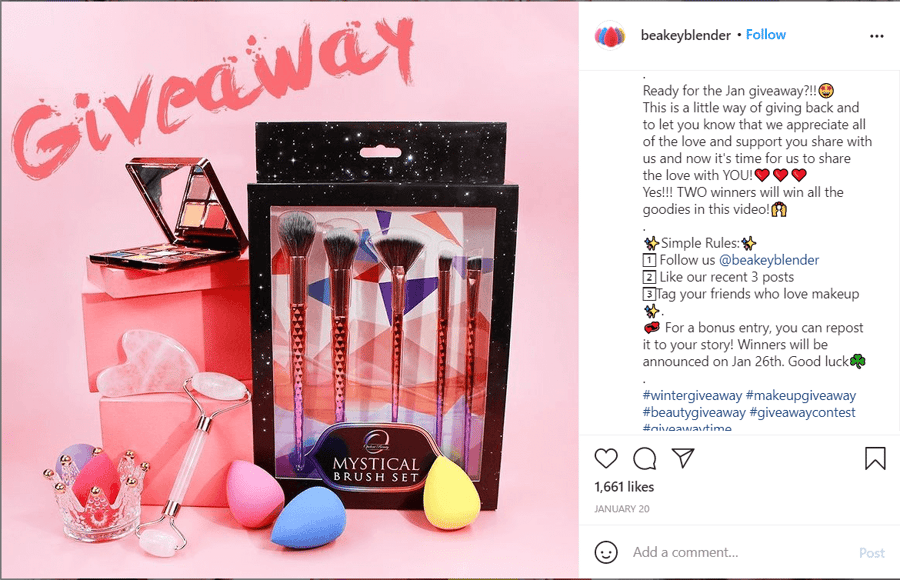As things stand in 2021, there are more than 12 million online stores. With that number only set to increase, driving traffic to your website will only become even more of a challenge. One of the reasons for the increase in online shops is Shopify. The platform makes setting up an online store simple and frictionless.
This has led to a large influx of new sellers. The increase in competition has proven incredibly difficult for some, with many stores getting minimal amounts of visitors. Minimal traffic means minimal sales. So how do you resolve the issue of increased competition and low traffic?
Here are our best strategies for finding low cost, uncomplicated traffic nurturing solutions.
Why traffic is crucial for the stores’ success
Driving traffic rates up is all about bridging the gap between consumer and brand. To put it quite simply, the less traffic you have, the fewer buyers you are likely to have.
The more you manage to reach out to interested customers, the more successful your brand will be when it comes to sales. Of course, you need to ensure that the customers you do bring in to your store are finding what they’re looking for.
Otherwise, you won’t make the sales and your bounce rate will increase. That will cause detrimental effects in the long run due to Google’s algorithm perceiving your store negatively.
Main sources of traffic to online stores
If traffic is an issue for your website, you may need to hone in on particular sources to increase the number of visitors your store gets. Online traffic trickles in from many areas of the web. But there are a few sources that you will see dominate for your website. It often varies by website category.
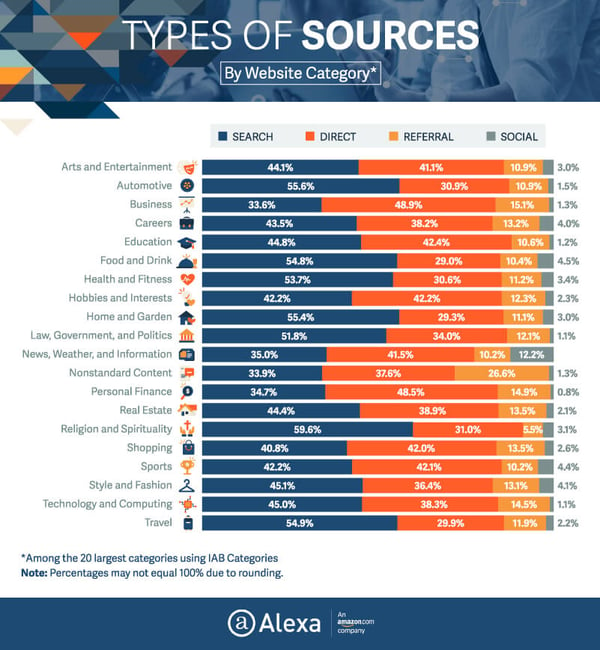
These are the main, general sources of traffic for most websites.
Search: Paid and organic
Many shoppers head straight to search engines like Google to begin the hunt for a product. In this case, your items can show up in one of two ways: through an ad you paid for, or through the search engine’s SEO algorithms (aka: organically).
Referral
Referral traffic are clicks that lead to your website through other sites (not search engines). Usually this comes from a third party linking to your site directly.
Social
These clicks come directly from any buzz there is about your brand on social media platforms.Direct
Direct traffic means that someone already knew your URL and typed it right into their browser. This usually happens when they’ve already visited your site and the URL is remembered by their browser search bar.
9 Free Tactics to Boost Your Shopify Store Traffic
It is important to have a clear strategy when it comes to driving clicks to your Shopify store. However, there is no one-size-fits-all approach, which means trial and error is often necessary to find the best strategy for your business.
When attempting to trial a plan to enhance traffic, each business should always take into account a few things. These include:
- Their budget
- The demographic they are aiming to reach
- The type of business they run
- The type of business they want to be
Once those factors have been considered a strategy can be implemented. So what are the various strategies that can be used to drive traffic?
1. Google Shopping free listings
With Google's launch of free Shopping ads in 2020, a whole new world of opportunities opened up for merchants and shop owners.
Now you can list your products for free through surfaces across Google. Your products will show up on the Shopping tab. All you need is a Google Merchant account and an (optimized) product data feed.
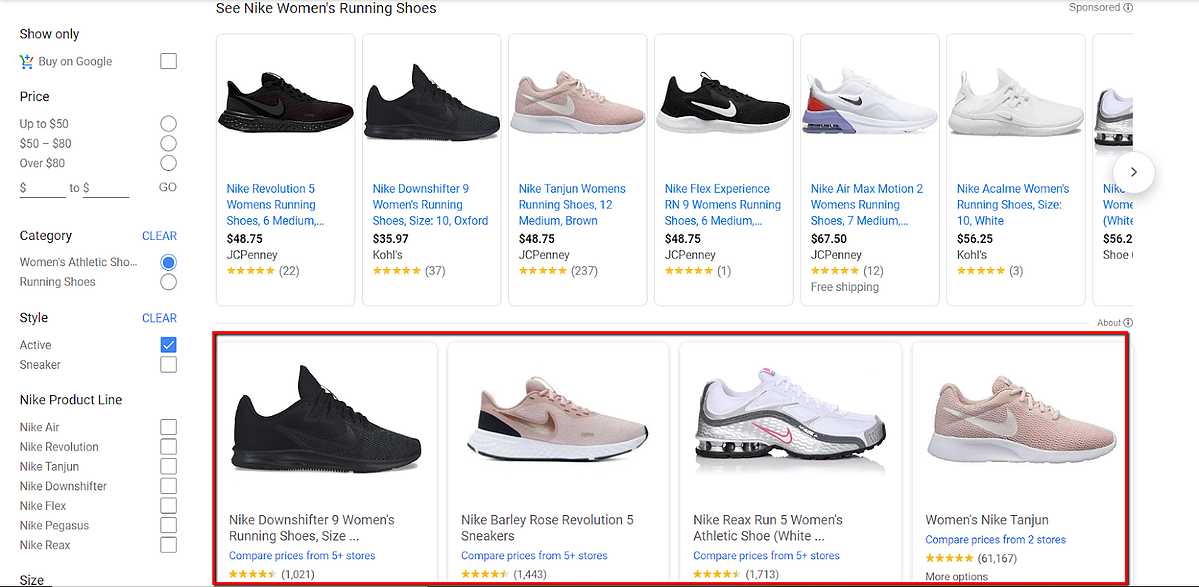
Because the ads are free, there is a higher potential of your vertical becoming crowded. That's why fully optimizing your product data is as important as ever. Speaking Google's "language" will help your products become more visible and push you above the competition. We'll talk about Google Ad optimization later on in this article, and the same tactics can be applied to the free listings.
2. Use search engines organically
Using search engines is a great way to drive traffic to your Shopify store. If you decide to organically generate traffic using search engines, you will need to utilize SEO.
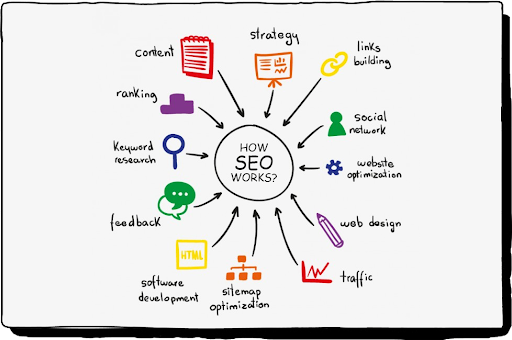
Search engine optimization
33% of the clicks on Google go to the first organic search result. Think about your own search history. How often are you going to pages 2, 3, 4 of Google's SERP (search engine results page) when you've found what you needed at the very top of the first page? Almost never.
Effective SEO optimization takes into account the full picture, from keywords to page loading times. It's all important.
You want to send the message to Google, "Look at me! I have what the shoppers want".
Therefore, successfully implementing SEO will generate substantially more traffic then ignoring this method. However, getting that first place can be quite challenging.
You will need to use all of the following website techniques to have a chance of attaining top spot:
Keyword research - check what keywords high ranking competitors rank for, as well as which keywords best link to your intended landing page and product. This will ensure the right people see your advertisement, whilst Google sees it in a positive light.
Quality content - High-quality content that Google and the average user will understand and appreciate.
Titles, meta descriptions, and search intent - Use the ideal keyword phrases in your title and description (phrases found from topic research)
Search intent is the shopper’s purpose or goal when typing in a query. Your title tag should contain the right keywords that trigger your site for searches, accurately matching what the shopper is looking for.
You can set a title for each page of your Shopify store, as well as for your store itself.
Captivating meta descriptions
Meta descriptions describe your webpage. It’s the text under the title that people see when you appear in search results. Let’s search for ‘Shopify’ and take a look at the results:
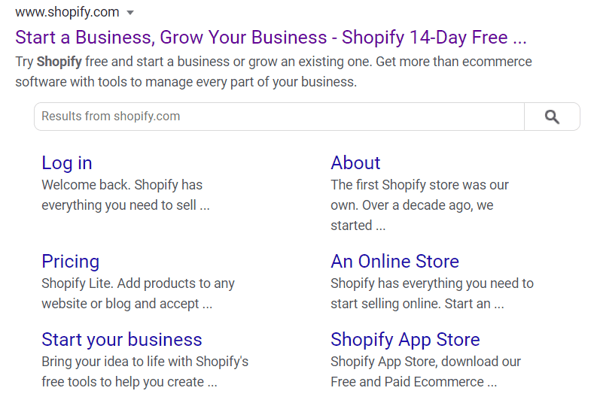
As you can see, they have a title for their main page, for each subpage, and meta descriptions under each one, describing what you’ll find on that page. If you’re looking for more information about the company, you’ll know exactly where to go.
Getting titles and meta descriptions right gives shoppers a glimpse of what your store has to offer and lets them know if you might have what they’re looking for.
Harness the internal linking power
There are more internal linking opportunities in your Shopify store than one might think. First, it’s important to thoroughly map the internal navigation of your site, which helps search engines like Google crawl it more easily. This means giving Google a better chance of knowing when to show your store in search results.
The second main opportunity is in your collections and product descriptions. If you’ve added a blog to your Shopify store, you can also link your other pages there.
In all these instances, you need to pay close attention to the anchor text you’re using and avoid keyword stuffing.
Stand out with rich snippets
To enable rich snippets (results) for your Shopify store, you’ll need to do a bit of coding. If you’re working with a programmer, it might be best to get them involved.
- Make sure your Shopify store theme supports rich snippets. It needs to be using “structured data markup”.
- Test your website here with Google’s Structured Data Testing Tool.
There are also plugins you can use in the Shopify app store.
ecommerceCEO ran an interesting case study about getting a Shopify store to rank #1 and effectively increasing the traffic.
Create appealing content
Top-notch content can also drive traffic to your store. Content is especially useful if you engage regularly, creating original content. This helps to establish your brand as a leader in your industry, whilst driving engagement and building relationships with your existing customers.
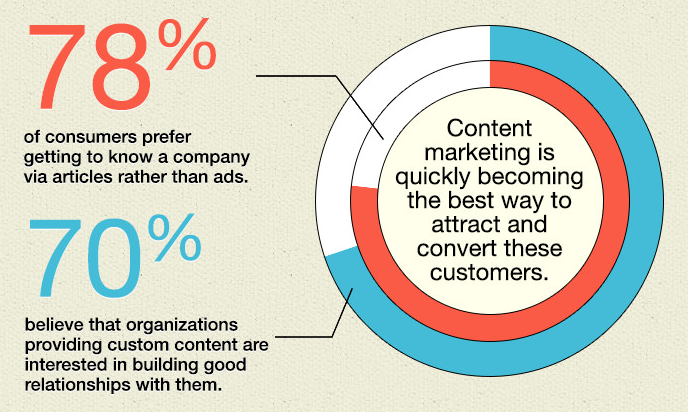
Content’s effectiveness can also be increased by including keywords so it ranks highly on search engines. In addition to that, you can utilize content further by sending out blog posts as newsletters and re-engaging existing customers.
To maximize the effectiveness of your content, you should try to offer a range of forms.
This includes:
- Blog posts
- Videos
- Podcasts
- ebooks
Better yet, curate your content for every stage of the buyer's journey and you can even guide potential customers in making a purchase!
Organic SEO will usually take a small degree of trial and error too. You can measure the performance of your shop´s organic SEO by comparing yourself to competitors, regularly checking keywords, and look at other statistics - including impressions and click-through rate.
Blog inspiration
Let’s take a look at some blogs that really stand out.
1. Press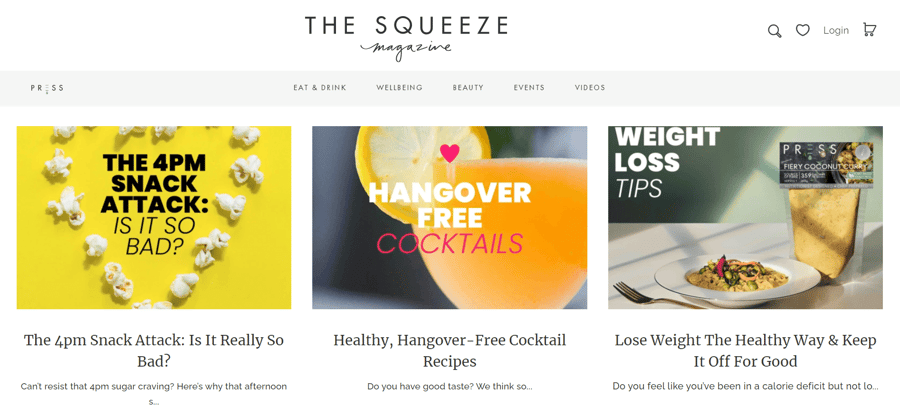
Press is a company that sells cold-pressed juice and aims to promote healthy lifestyles. They created their blog The Squeeze to share holistic strategies with their readers. People who are interested in their products will be interested in their posts, and vice versa. They do a good job of seamlessly integrating the two.
2. BarkBox
BarkBox created a monthly subscription box tailored just for dogs. Their blog is full of interesting (and cute) content that all dog owners will find useful. They’ve also put an emphasis on social media and have made it extremely easy for readers to share articles online. This helps lead new potential customers to their store.
3. Sole Bicycles
Sole Bicycles has made their blog very visual. They’ve kept the text in their posts to a minimum and instead let the photos do most of the talking. This helps get who they are as a brand across quickly and clearly.
Feeling inspired? Check out some more great examples here.
3. Develop a referral program
Referral programs are a win/win situation. You achieve your target (whether that’s more sales, subscribers, etc.) and your customers (existing and new) get an incentive (a discount, free item, etc.).
When people are looking to try out a new product, they naturally turn to their friends and colleagues for trusted recommendations. By having a clear referral program, you bring yourself into the conversation naturally. So, how do you set yours up?
Planning and Research
Start with determining what your specific goal is and make sure that your referral benefit makes sense for your ideal customer. For example, if you’re selling beauty products you could offer a discount or even a free item from a new line.
Here are a few other ideas you can use:
- Refer X amount of friends, get X product free
- Have X amount of friends purchase, get X discount/product free
- Give X% off, get X% off
- Give $X, get $X
- Give free month, get free month (for subscription boxes)
You can find some great, real-life examples here.
Execution
Now for making sure the program actually takes off. To ensure that your customers are fully aware of the program you can send emails when it launches and make the details easy to find on your website. You also need to make it as easy and uncomplicated as possible so that people actually use it and the referee follows through. Things like unique codes work well.
Keep it going
To build your referral program into your brand, make sure to follow up with your customers. Thank them for referring their social circle, listen to their feedback, and continue making improvements.
4. Hit the social media bullseye.
By connecting and interlinking all your social media accounts with your store, people are more likely to come across it. Especially if your accounts are active. You can also engage in social media groups where you may find many people interested in your product. However, if you intend to promote like this, you should ensure it comes across as authentic and not like a sales attempt.
The purpose of social media
Social media is the gateway to your customers. It is the best way to build relationships with them and also offers a good opportunity to build on your brand identity. When it comes to generating increased traffic from social media, Facebook is second to none. Nearly two-thirds of all social media visits to Shopify stores come from Facebook. With a staggering 85% of all social visits based orders also coming from the site.
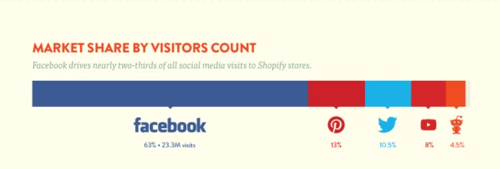
Start in your own neighborhood
Asking friends and family to share your posts is a great way to get the buzz about your store going. It just takes a second of their time and will instantly get your store in front of an audience you may not have had access too.
Engagement
Keep up with everyone who is posting about your store and interacting with your posts. Replying to comments can go a long way when it comes to building up your brand’s reputation. If you have the time, try to keep up with social media messages as well. The more you interact, the more people will want to keep posting about you.
Shoppers often turn to social media when they need customer support, so try to keep an eye out for users who need your help.
To generate your own traffic from Facebook, or other social media, you should keep a few things in mind:
- Driving traffic on social media requires engagement. That means if you are a big business you can manage that across various platforms. However, small businesses should probably choose the most lucrative platform for themselves and focus on that.
- As social media is a bridge between business and consumer, it is the ideal place to get feedback. Many customers will come to you on social media and ask questions. This is the ideal time to create a relationship with the customer and a positive brand image. This will in turn, continue to create more traffic in the future.
- Social media posts should be sales posts. They should promote products and the brand without seeming pushy. Calls to action should still be included but they need to offer something to the customer, such as a promotion or a positive message. The goal may be to drive engagement and traffic, but it needs to be done through caring about the brands customers.
Extra Tip: Connect your Instagram Stories to your store
Did you know you can add your Instagram stories to your Shopify store? Apps and like Storypop allow you to embed your Instagram Stories to your Shopify webpage.
5. Discount codes and offers
Discount codes help to lure customers into your store not only to browse, but to buy. Special offers can also be used with surveys and other tools that allow you to gain a better understanding of your customers. This method can help to attract new customers or at least help you gather more information on why someone is or isn’t interested.
Site-wide offers also peak shoppers’ interest and can convince them to stick around, browse your shop and ultimately make a purchase. The numbers show that enticing shoppers with discounts work: 57% of shoppers who were offered a discount made a first-time purchase with that brand.
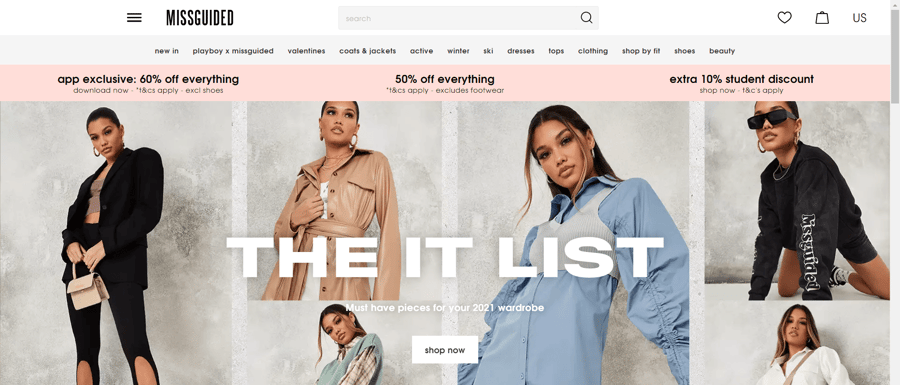
The bar at the top of Missguided’s websites lets shoppers know that if the chances of them finding an item they want for a good price is high.
Keep the following points in mind when creating your discount strategy:
- What do you want to accomplish? Is it selling a certain item, downloading your app, attracting returning customers, etc.
- Use discounts strategically so that they add value to your brand, not detract.
- Make sure that your discounts contribute to your profit goals.
Let’s take a look at a couple of ways you can carry out your discounts.
Contests and giveaways
You can also drive excitement by creating contests and giveaways. Make it easy on shoppers by just needing to provide their email or fill out quick form. An added benefit of contests is that participants share it online 54% of the time, on average.
In this example Albert’s, a jewelry company created a contest for Valentine’s Day.
To enter, contestants needed to fill out a quick form and a photo with their loved one. The winner was decided by the number of votes they received.
Another commonly used method is creating an Instagram post that instructs followers to tag 3 friends or re-share it in their stories to have the chance to win a package with your products. Giveaways are a great way to get more traffic, followers and brand exposure.
Time-sensitive discounts
Nobody wants to miss out on a good deal. Make it very clear when your discount starts and ends (like a banner on your website) and send a reminder to your customers that time is running out. The company Bath & Body Works is a great example of this with their annual and semi-annual sales. Shoppers know to look forward to them every year.
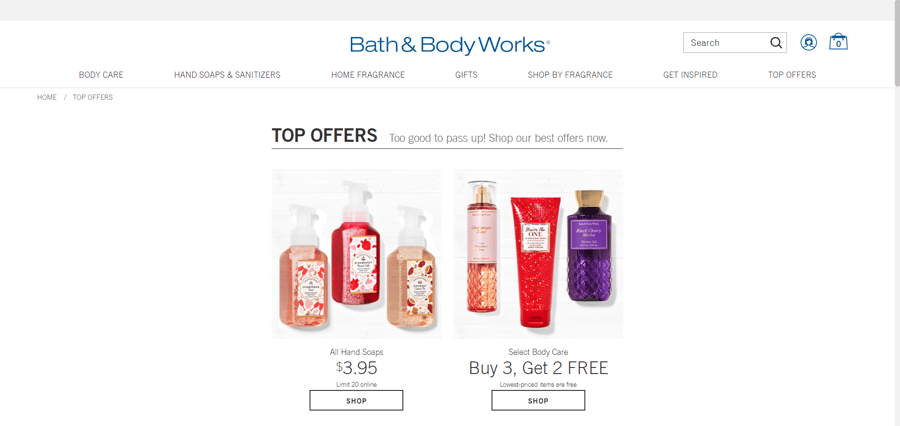
6. Become an email marketing pro
Emails are a staple of marketing. Shoppers are weary these days of heavy sales pitches, but a well-crafted email can have a positive effect. It’s also a way to keep people engaged with your business after making their purchase.
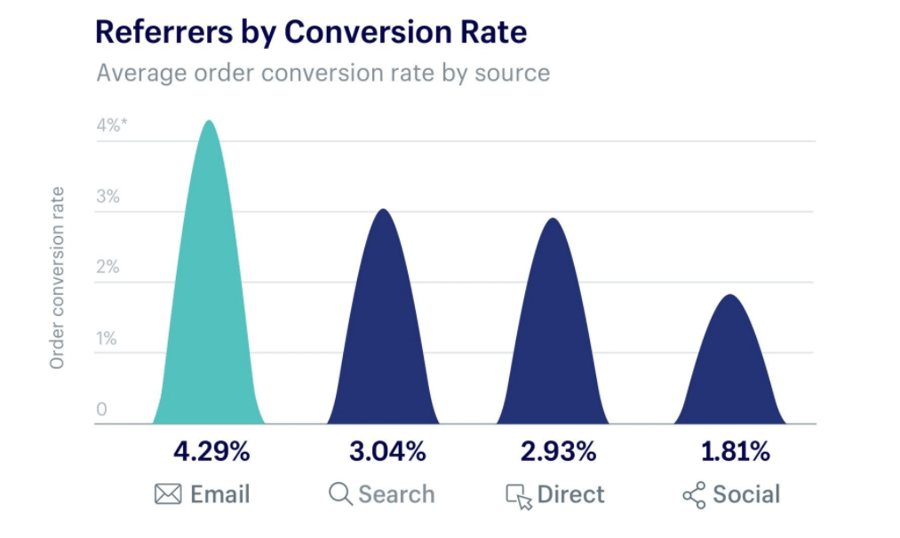
Make the email beneficial for your readers. That means providing relevant information, showcasing your products in an engaging way, and getting creative. It’s part of building your brand’s awareness and creating a world for shoppers to explore.
You can even create your emails right in Shopify. They have templates you can choose or get inspiration from. Knowing who your customers are will make your emails feel natural rather than forced.
Not every email will be suited for every customer. That’s why you should create groups in order to better tailor who sees what. Make sure that you’re not spamming people on your email list either. Have a clear way to subscribe and unsubscribe.
By sending regular newsletters to existing customers, you can ensure they know about any updates in your store. If this is a new product, it may increase both traffic and sales.
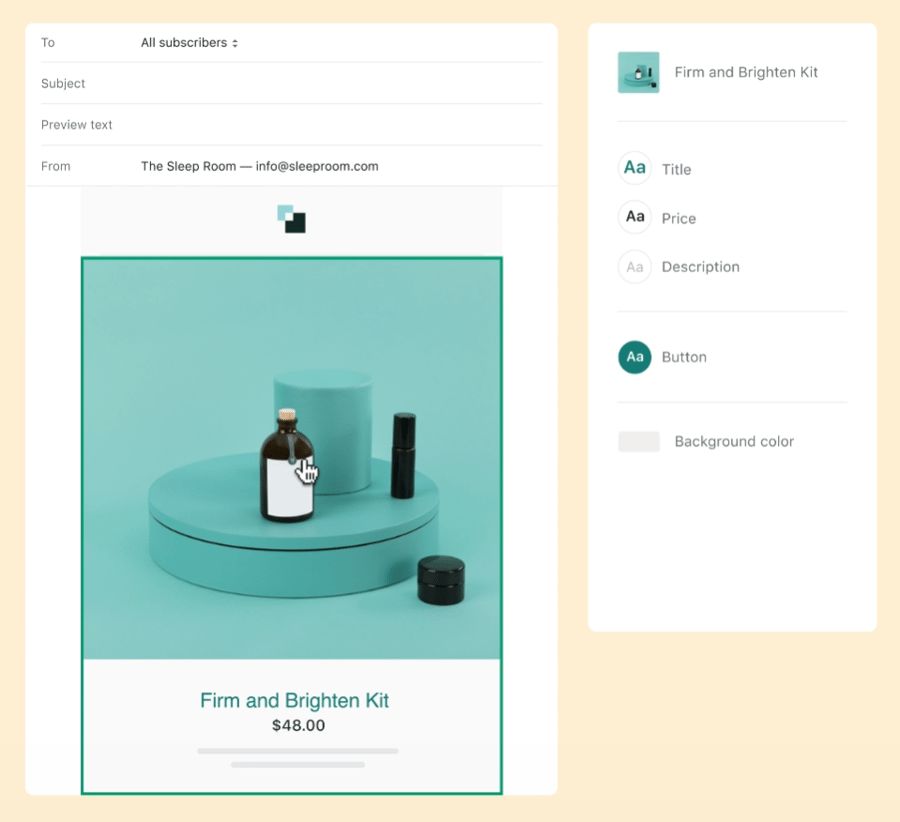
In addition to that, if current customers are informed about updates they may spread information about your shop.
Main benefit - Keeps current customers up to date with what’s in your store and therefore tends to maintain existing traffic levels at a minimum.
7. Link up by writing guest posts
Brush up on your networking skills and reach out to authors of blogs with the same niche as you. Offer to write guest posts or even expert contributions in exchange for linking back to your website.
This is a great chance to build relationships with people in your industry and provide opportunities for your brand in the future. Open up the same opportunity to those blogs to keep the mutual benefits up in the future.
Some tips to keep in mind:
- Bring your unique voice and point of view to the piece
- Make sure what you write is of high quality
- Use your links wisely
- Be familiar with the blog’s requirements
Along with leading new customers to you, you’ll also build credibility for your business, and benefit your SEO ranking with additional links.
Want to start guest posting? Here’s what to do:
- Your goal is to get traffic to your Shopify website, so look for blogs that already have a large following.
- Search the web for blogs that are related to your niche or industry in some way. If you're selling music equipment your search can look like this: Music gear guest post guidelines.
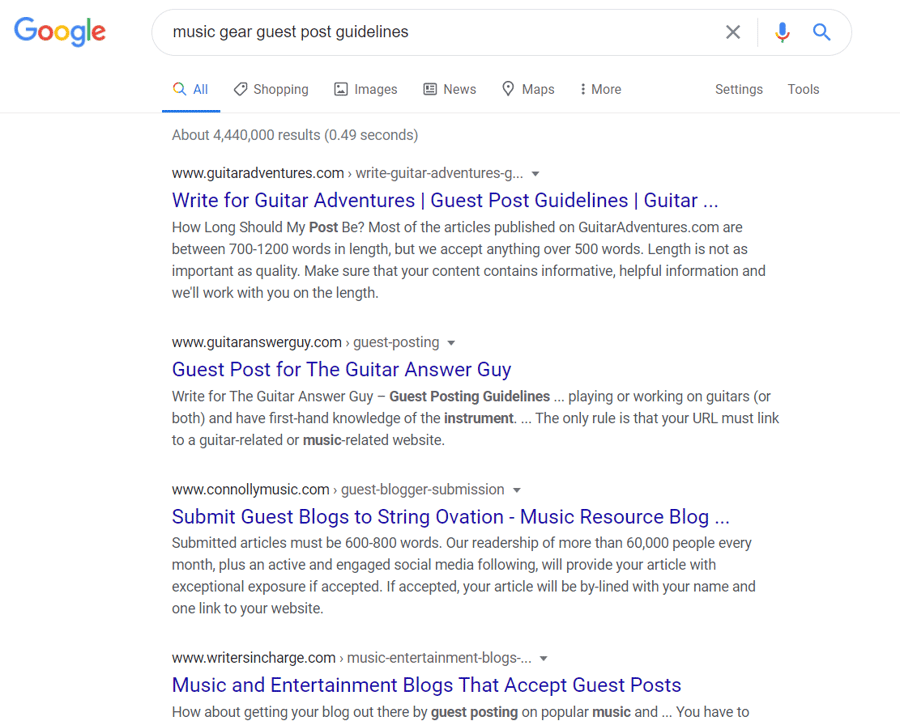
- Make a list or spreadsheet of the blogs you find and the social media contact or email of the owner (LinkedIn works great for this, and with slight automation options, you could make the most of this channel to send personalized InMails, messages/ invite notes to potential contacts).
- Find where to submit your posts, make sure you're familiar with each blog's guidelines and get to work. Often a website's guideline's page will offer an email address to send it to.
- Each piece you write should be unique.
- Choose your links wisely.
8. Drive free traffic to your store with Ads exchange
Free ads exchange is a great way to trade exposure with other businesses. You can even install this Shopify app for easy integration of this method.
How does it work?
By using an app like Free traffic Exchange you can host ads on your site and in return, other shops will show ads for yours. These ads shouldn’t be too distracting for shoppers since they appear at the bottom of the screen, are able to be excited at any time, and only last for 30 seconds.
9. Advanced Expert Tactic: Develop Pre-Release Product Pages for Big Upcoming Product Releases
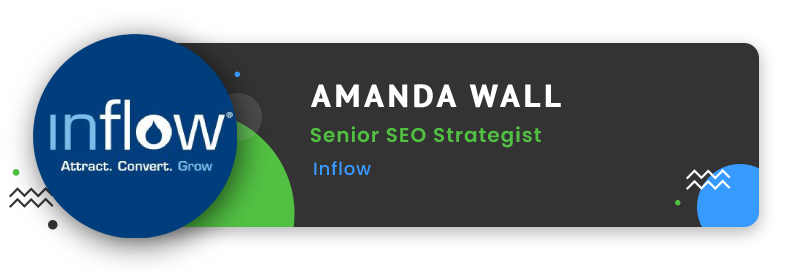
An off-beat marketing tactic we use at MightySkins.com is to develop pre-release category & product pages for big upcoming product releases, such as for the iPhone, Oculus Quest 2, and Playstation 5. It can be a pre-order page or simply a page with product details but if you can get pre-orders or email signups to send out in-stock notifications, that's best for conversions.
For SEO reasons, the earlier a page is created, the sooner Google will index it, rank it, and send organic traffic. Being one of the first in your industry to have a page can also give your page a boost in authority, especially if it earns links and shares before everyone else, which can be key in getting and maintaining a #1 ranking for a competitive phrase.
5 ways to drive paid traffic to your Shopify shop
1. Run paid social media ad campaigns
The first step with paid social ads is deciding where your potential customers are. Each platform has its own unique purpose and benefits. You may even decide to go for more than one.
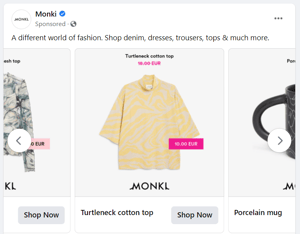
Facebook ads
One advantage of using Facebook ads is that you can target specific types of audiences. Let’s say you sell high-end office furniture and your average customer is 35-40 women who are interested in minimalism design and programming. You can target this specific user profile and increase your chances of clicks and sales.
Another benefit is that Facebook offers many types of ad formats (single image, carousel, video, etc.) so your ads won’t be disruptive to users. If done right, it will fit into their feed and peak their interest.
In this example, clicking on the item leads directly to the page where users can purchase.
Related: check out these 5 Expert Hacks for Google & Facebook Ads for Shopify Shop Owners
Instagram ads
In 2020, Instagram made a rather large change to their interface which further emphasized the focus on shopping. Now there is a shopping tab at the bottom of the app which curates items from stores that users already follow as well as ones they might be interested in.
If you’re selling jewelry, clothing, house decor or any other lifestyle products, then Instagram ads are a great way to go. You can even link your shop so that your ads and posts become shoppable.
Pinterest ads
Pinterest is another highly-visual platform. Users browse the app when they’re looking for inspiration for all areas of their life. It’s also possible to make your ads shoppable and when people have tried your product they can add their own photo for an extra layer of real-life promotion.
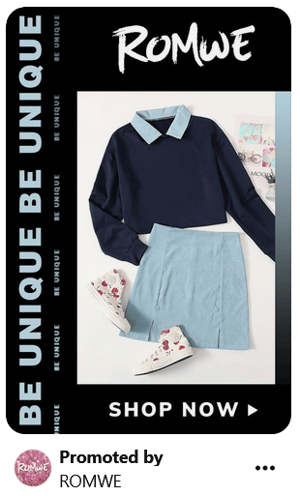
There's also another social media phenomenon - TikTok. Read our guide on how to advertise on TikTok.
Pro tip: optimize your data feed for maximum results.Of course, we couldn’t leave this one out. Optimized product feeds are also vital to the success of social ads. Check out this case study on how to use your Google feed to sell on Facebook and Instagram.
2. Pay per click ads (PPC)
Regular shopping and text ads are also going to be beneficial for your Shopify store. We’ll focus here on Google Ads which is typically the most popular, but other sites such as Bing may be where your shoppers are.
You can start advertising on Google Shopping directly through your Shopify account or by integrating a third-party optimization tool like DataFeedWatch.
Either way, there are important elements of your product data feed that you should enhance for optimal results. In case you find yourself in doubt about the feed attribute names, you can check out our article on how to match Shopify fields with Google Shopping attributes.
- Titles
- Descriptions
- Images
- Price
- GTINs
You can use these same attributes (except images) to optimize your Google Search ads as well.
3. Cooperate with influencers and brand ambassadors
A slightly outside of the box way of increasing traffic is to use influencers. By using influencers, the goal is to drive traffic by increasing brand awareness. The use of an influencer will ideally generate more shop visits and more sales, because their opinion counts to those who look up to them.
Many influencers use social media as their main tool for marketing. Instagram and Youtube influencers tend to be the most viable options for eCommerce brands as they’re more visual.
- PR (Public relations) packages - a free, curated box that typically highlights your brand in a unique way. They’re great when you want to get the word out about a new line you carry, especially with the rise of unboxing videos.

- Sponsored posts - There are currently over 14 million sponsored posts (with the hashtag #ad) on Instagram. They are used for all kinds of products, from beauty and self-care to food supplements. It works by a brand paying an influencer per post to show how they’re using the product. There are usually pretty strict guidelines so that users are aware it’s paid content.
- Social media takeovers - Get an already established audience interested in your brand. Often this works by someone taking over your social media Stories (on Facebook or Instagram) and posting content throughout the day. Followers of this person are likely to follow you as well to see what they’re up to.
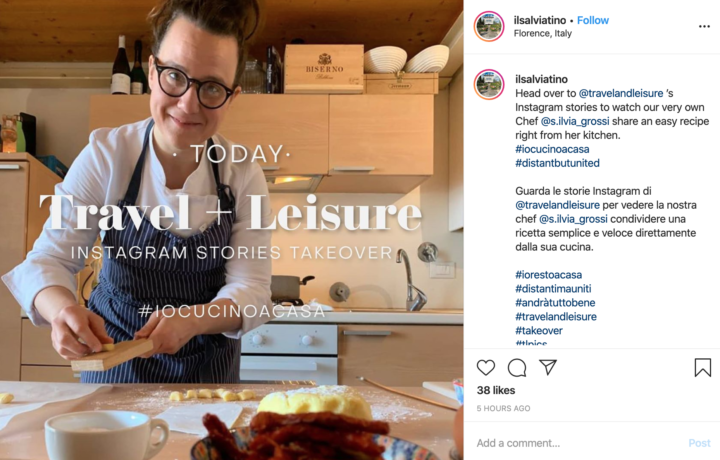
How to find suitable influencers:
- Know where your customers are. If your influencer is posting about your products on Twitter, but your customers mostly use Instagram then it’s not going to be beneficial.
- Decide how much you’re willing to pay per post and what your overall budget is, including any free items you’ll be sending them. This will narrow down your search pool.
- Try searching hashtags that relate to your goals or campaign. Take a look at their follower count and engagement. Influencers with 3k-5k followers should be the easiest to start out with.
- Starting a campaign with an influencer is usually as simple as getting in touch with them via social media and agreeing on what both parties want. Create a template message stating who you are, your starting offer and an email address they can reply to if they’re interested.
- Alternatively, there are various platforms that give you free and easy access to the best influencers in your sector.

You should try to ensure that the influencer you do decide to use also reflects the values of both your brand and campaign. Check they share your goals and have the audience you are looking to reach. You can generally get a good idea of all this by looking at their content prior to your engagement.
If you don’t have the budget to pay high-profile influencers for posts, you can go the brand ambassador route. This can work in a couple of ways, and depends on the deal you make.
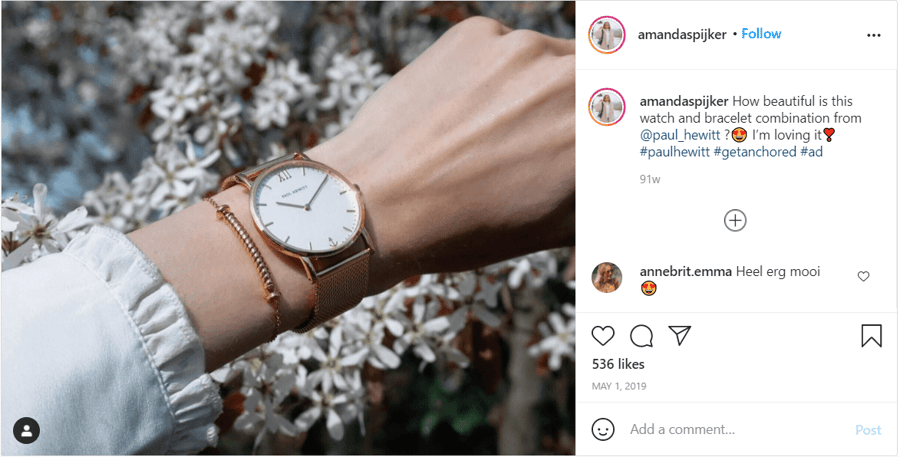
Having a brand-specific hashtag is a great way to find potential ambassadors. These can be people who genuinely love your brand, are already using your products, and want to spread the word. Payment can be as simple as a repost or sending them free ‘thank you’ items.
While influencer collaborations may be a one time thing, brand ambassadors can often be ongoing.
4. Sponsor a podcast
Podcasts have become a way for hosts of the shows to earn money. This comes through brands sponsoring an episode. Typically the host of the show will take a “commercial” break and naturally talk about your product or read the ad copy you’ve provided.
Then you create a unique link for listeners of the podcast to visit that often leads to a special discount for your products. By doing this, you can piggyback off the trust already developed by the podcast and its listenership.
Here are some quick podcast facts:
- There are over 1,750,000 (million!) shows.
- In 2021 there are over 43 million episodes.
- 50% of households in the US are fans of podcasts
You don’t necessarily need to target a podcast that is related to your products, but it’s best to at least choose a similar demographic to your customers. This could be age groups or general interests.
An Ahref’s team member wrote an interesting Medium post about their journey of sponsoring podcasts and getting it right.
5. Take it offline
Remember, you can sell your items through Shopify in person as well. Shopify POS Lite is available for all plans, so you can experiment with setting up a booth at an expo or fair and hand out business cards, stickers, etc. with your website info. If you’re selling vintage or unique items then it could definitely be worth your time.
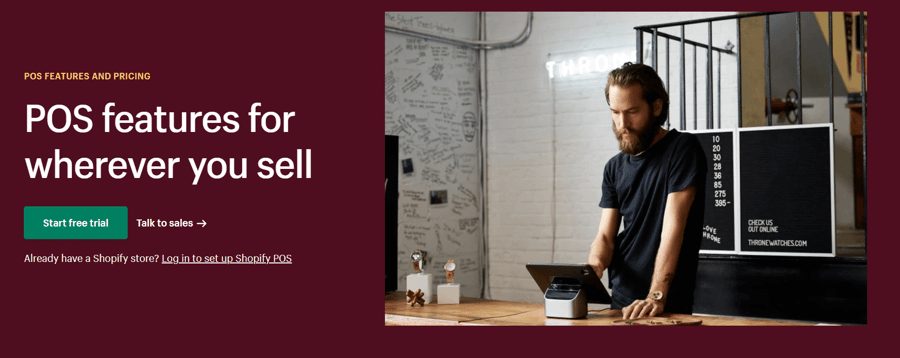
9 Reasons for low traffic to your Shopify Store
Low traffic to a Shopify store is one of the main reasons for a lack of sales. But what are the main reasons for the low traffic itself? Check to see if you recognize any of these potential problem areas and how to fix them.
Targeting the wrong demographic
Research is important for ensuring that your shop gets plenty of visitors. If your advertisements are reaching the wrong demographic, then people will either decide not to click on them initially, or bounce straight back out of your shop. Either way, the result for you is bad. Therefore, you should always make sure you know who to target and when.
Fix: Discover who exactly your customers are. You can do this through surveys or finding social media posts about your products. Keep track of your data and what ad targeting changes you’ve made when there’s a rise or fall in your click through rates (CTR) and/or bounce rates.
Poor quality photos on ads
Ads are a great way to generate traffic to your Shopify store. However, if the photo on your ad is unclear or in any way misleading, people may be deterred from it. They may even choose a competitor's product instead. So a good quality image is essential.
Fix: Test your images. For example, lifestyle images may perform better with your customers than stock photos.
Low quality feed
Data feeds are files containing specific information about products from your store. They allow you to keep your shops and advertisements up to date and maximize their potential.
A low quality feed can severely hamper the success of a Shopify store. A poor feed may lack a product description, advertise out of stock products or have one variant advertised as another. All of these things can contribute to low traffic, as customers will be less convinced by the product in the advertisement, if they even see the advert in the first place.
Fix: Spend the time optimizing your data feeds or, to save time, consider using a 3rd party app like DataFeedWatch to get the job done.
No call to action
A lack of a call to action can lead to customers simply not engaging with promotions or advertisements. Therefore, they may skim over your product and store.
Fix: This is another great area that you can do A/B testing to find what works best for your products.
No obvious social media links
No clear social media can hamper a Shopify store. Many customers prefer to contact businesses through social media to ask questions about products or services. If the social media of a brand isn’t visible, they may choose to move on and not buy with you.
Fix: Add social media icons to your Shopify page that link to your profiles. Keep your social pages updated with fresh content that showcases your products.
No contact or information pages
Similarly to social media, if there is no information about the brand, buyers may not trust the company. A lack of ability to contact them also contributes to this. Whilst it also does not allow customers to ask questions and leaves a substantial gap between brand and consumer.
Fix: Create an easily accessible contact form or make your email address visible to shoppers. You should also craft an engaging ‘About Us’ page that will convey who you are and what your brand’s story is.
No return policy
This is generally a poor business practice. Customers will simply not trust a store with no return policy.
Fix: Create a clear, fair return policy and add a link that can be easily found by your customers.
No navigation menu on website
No navigation menu can make the website hard to navigate and therefore deter customers from visiting product pages. Thus, reducing traffic and sales.
Fix: Become familiar with how Shopify’s navigation menus work and organize your products in a way that’s intuitive.
Poorly designed website in general
A poorly designed website can load slowly. This may lead to a high bounce rate as customers lose patience.
Fix: Take advantage of Shopify’s themes for a beautiful, eye-catching page.
Final thoughts
As competition continues to grow, it is vital to remember your marketing strategy when it comes to your Shopify store. Generating the right traffic will drive your shop's success.
Remember to build your strategy around your own budget and research. This will allow you to get the most value for money with your advertising, whilst attracting the highest number of potential customers. To further maximize your potential traffic, remember to stay on top of your feed. Update it when necessary and take advantage of your most lucrative products.
Related read: Shopify vs. Shopify Plus: How to Choose the Right Plan for Your Business


